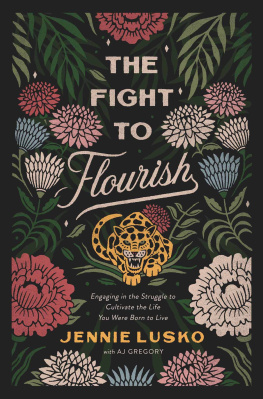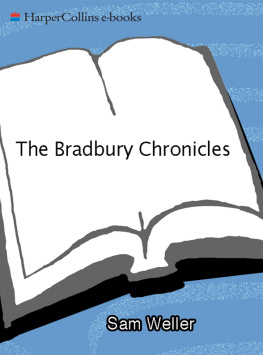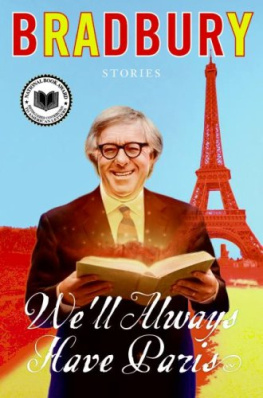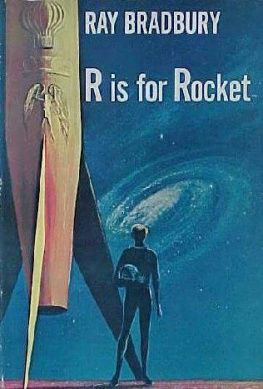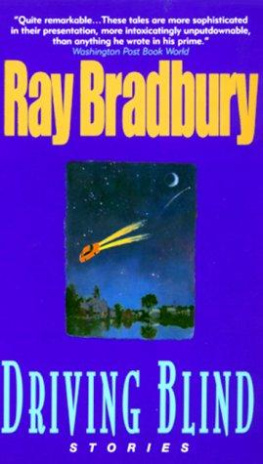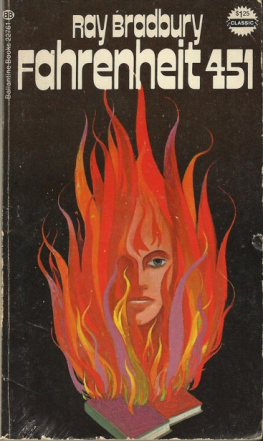Bradbury Jennie - Engaging with the Dead
Here you can read online Bradbury Jennie - Engaging with the Dead full text of the book (entire story) in english for free. Download pdf and epub, get meaning, cover and reviews about this ebook. year: 2017, publisher: Oxbow Books, Limited, genre: Home and family. Description of the work, (preface) as well as reviews are available. Best literature library LitArk.com created for fans of good reading and offers a wide selection of genres:
Romance novel
Science fiction
Adventure
Detective
Science
History
Home and family
Prose
Art
Politics
Computer
Non-fiction
Religion
Business
Children
Humor
Choose a favorite category and find really read worthwhile books. Enjoy immersion in the world of imagination, feel the emotions of the characters or learn something new for yourself, make an fascinating discovery.
- Book:Engaging with the Dead
- Author:
- Publisher:Oxbow Books, Limited
- Genre:
- Year:2017
- Rating:3 / 5
- Favourites:Add to favourites
- Your mark:
- 60
- 1
- 2
- 3
- 4
- 5
Engaging with the Dead: summary, description and annotation
We offer to read an annotation, description, summary or preface (depends on what the author of the book "Engaging with the Dead" wrote himself). If you haven't found the necessary information about the book — write in the comments, we will try to find it.
Engaging with the Dead — read online for free the complete book (whole text) full work
Below is the text of the book, divided by pages. System saving the place of the last page read, allows you to conveniently read the book "Engaging with the Dead" online for free, without having to search again every time where you left off. Put a bookmark, and you can go to the page where you finished reading at any time.
Font size:
Interval:
Bookmark:

Studies in Funerary Archaeology Vol. 13
E XPLORING C HANGING H UMAN B ELIEFS ABOUT D EATH , M ORTALITY AND THE H UMAN B ODY
Edited by
JENNIE BRADBURY AND CHRIS SCARRE

Published in the United Kingdom in 2017 by
OXBOW BOOKS
The Old Music Hall, 106108 Cowley Road, Oxford OX4 1JE
and in the United States by
OXBOW BOOKS
1950 Lawrence Road, Havertown, PA 19083
Oxbow Books and the individual contributors 2017
Hardback Edition: ISBN 978-1-78570-663-9
Digital Edition: ISBN 978-1-78570-664-6 (epub)
Mobi Edition: ISBN 978-1-78570-665-3 (mobi)
A CIP record for this book is available from the British Library and the Library of Congress
All rights reserved. No part of this book may be reproduced or transmitted in any form or by any means, electronic or mechanical including photocopying, recording or by any information storage and retrieval system, without permission from the publisher in writing.
For a complete list of Oxbow titles, please contact:
UNITED KINGDOM
Oxbow Books
Telephone (01865) 241249, Fax (01865) 794449
Email:
www.oxbowbooks.com
UNITED STATES OF AMERICA
Oxbow Books
Telephone (800) 791-9354, Fax (610) 853-9146
Email:
www.casemateacademic.com/oxbow
Oxbow Books is part of the Casemate Group
Front cover: Sarcophagi at Tyre, Lebanon (photo: J. Bradbury)
This volume presents a variety of cross-disciplinary, archaeologically focused approaches to exploring the interpretation of mortuary traditions, death and ways of disposing of the dead. Topics range from conceptualisation of the body in modern burial reform to detailed discussions on taphonomy, and from studies of memory and curation to reconstructing ancient demography from historic population estimates. Whilst many of the discussions are partial or represent preliminary hypotheses, together they highlight the current vitality of death studies and the potential for future research and discoveries. The aim of this volume, and the project that inspired it (The Invisible Dead Project, funded by the John Templeton Foundation) is to explore changing beliefs and practices over time. How do modern archaeology, ethnography and historical records aid our interpretations of the past, and how have past practices influenced understandings of death and dying within the modern world? Death is a part of life and should be respected as such. Many of the practices documented by archaeology appear bizarre to us today, but they are part of that human awareness of self and the afterlife that we share with previous generations. Hence our objectives are forward-looking: to better understand the present by studying the past. In this introduction we simply seek to trace some common themes that emerge from the various contributions to this volume and, by doing so, demonstrate the multitude of ways that we, as archaeologists, can engage with the dead.
The decades spanning the transition to the 21st century have witnessed a dramatic growth in what have, generically, been called death studies. From anthropology and sociology, through classics, literature, art, music, philosophy, theology and ethics, to politics, biology and medicine, issues of dying and death have assumed a heightened profile. Yet, the potential of the archaeological record of human burial, viewed in diachronic perspective, to provide evidence of long-term trends and changes in belief, has not hitherto been systematically addressed. Ian Morris (1992, 69) in a study of burial in the Roman Empire, stressed the massive potential of large-scale empirical analysis when undertaken by investigators who are aware of the historical problems. Two features of the early funerary record the invisibility of the majority of the dead, and variable and symbolic manipulations of human bodies and body parts demand detailed and concurrent attention. It is already widely recognised that in western Eurasia, the documented record of human burial from the beginnings of farming to the Roman period can represent only a fraction of those who must once have lived, despite, in the case of the Levant, a corpus of textual evidence which stresses the importance of a proper burial. Attitudes to bodies, death and personhood lie behind this. Issues of taphonomy and preservation must be addressed in order to evaluate how many burials might have been lost and how representative the surviving sample is of previous funerary practices, but the burial record is so fragmentary and incomplete that it seems justified to turn the whole issue on its head. The surviving remains may not be the primary burial practices of the past but might be unusual or marginal in relation to mainstream practices of body treatment or disposal that have left almost no trace. The surviving burials may be those of elites, or special sections of society, or those who died in particular ways. These are the questions that underlie the Invisible Dead project.
Burial deposits constitute a major component of the archaeological record and have often been used to draw inferences about big questions pertaining to social organisation and belief. More directly, they can answer questions about mortality, longevity, health and disease, and violence. The physical study of human remains is covered by several textbooks ( e.g. Ortner 2003; Roberts 2009; Waldron 2009; White and Folkens 2005). More general reviews of burial evidence in archaeology are provided by Parker Pearson (1999), Taylor (2002) and Tarlow and Nilsson Stutz (2013). Burial evidence figures prominently in studies of ritual and belief (Insoll 2004) and personhood (Fowler 2004; Hamilakis et al. 2002). Death and burial have also, of course, been a major concern of anthropologists studying non-western societies for well over a century ( e.g. Bloch and Parry 1982; Hertz 1960 [1907]; Huntington and Metcalf 1979; Mauss 1938). Despite this multitude of studies and publications, however, there has been a tendency to shy away from comprehensive big scale or big question studies, in favour of smaller, thematic or period-specific contributions.
One of the greatest challenges to those embarking upon big data projects in archaeology is the sheer variability and incompleteness of our datasets. This is nowhere truer than in considering past burial practices. For certain parts of the world the discipline of bioarchaeology is relatively recent and its uptake and adoption into mainstream practice have been limited (Bradbury et al. 2016, 5701; Perry 2012, 457). By contrast, for countries like the UK there is an overwhelming mass of information, held by different local authorities, and documented through sources that have been subject to varying degrees of publication and are often difficult to access (Bradbury et al. 2016). Finding appropriate ways to deal with non-comparable datasets was an issue at the heart of the Invisible Dead project and is touched upon by numerous contributions to this volume ( e.g. ) discusses several large bioarchaeological projects that reveal what is possible when large amounts of data are synthesised and studied. Despite the unevenness of these large datasets and the analytical limitations that follow from that, she amply demonstrates the huge potential of big data research. For bioarchaeological studies such as this, however, one of the most significant challenges is the threat posed by reburial and lack of storage space in museums, a problem to which we shall return in the final chapter.
Next pageFont size:
Interval:
Bookmark:
Similar books «Engaging with the Dead»
Look at similar books to Engaging with the Dead. We have selected literature similar in name and meaning in the hope of providing readers with more options to find new, interesting, not yet read works.
Discussion, reviews of the book Engaging with the Dead and just readers' own opinions. Leave your comments, write what you think about the work, its meaning or the main characters. Specify what exactly you liked and what you didn't like, and why you think so.



